A morning walk on the hill

Carrigmaclear hill, County Tipperary
Irish Landscape Photography : Nigel Borrington
This Morning the weather here was a welcome break from the days of rain we have been having since Christmas. Parts of the south of Ireland has been getting the
worst floods for over a hundred years.
This Morning however we had clear blue sky’s and a frost, I just had to get out early and take a walk. Carrigmaclear is a local hill near the mountain of SLievenamon , County Tipperary, the following images are taken on this mornings walk in the first light of the day.
Gallery
Getting close in the landscape

Following the fence
Irish Landscape photography : Nigel Borrington
Way back in 1986 I purchased a Tamron SP500 f8 Mirror (Telephoto) lens from a camera shop in London, it was second hand and cost around £150 back then.
The lens is reviewed very well here : Photozone review
I came across this lens again while sorting out some equipment last week and could not resist taking some images with it, so I put it onto my Sigma x3 camera and took a walk with both through some local fields.
I am not going to reviews the lens as such here as this is done so well in the above review, what I would say however is that this is a manual focus lens that is able and very capable of producing some very detailed and delicate images.
I really enjoyed using it again, if you are looking for a lens that is quick to use then this lens is not for you. If you take your time while creating your images however then this lens offers some very different and interesting results. I very much liked the shallow depth of field, there is something about the design in a mirror lens that produces a very find focus area in the image results.
I also felt that the combination of this lens alongside the sigma x3 sensor, produced some of the closest results to using film that I have noticed while using a digital camera.
The lens is very sharp, it produces wonderful colour and contrast, focuses down to 1.7 meters from the nearest subject and has a very shallow depth of field through out its focus range. Photographers spend a lifetime looking for lenses that have these features along with very distinctive results, if you can give this lens the time to learn how best to use it, I feel you will love it !
These lenses are often for sale on Ebay, if you want to purchases one and try one out !
Gallery
Sigma SD15

Sigma SD15 with 15-30mm f3.5 lens
Sigma’s SD15
If anyone has read my other camera reviews you will have noticed that I don’t review any of my Pro level slr cameras from Nikon or Canon , the reason I don’t do that here is simple.
Here is a good reason why, I was out walking our golden retriever, one Sunday about two weeks ago and passed two photographers with Canon SLR’s, Tripods, all top of the range equipment. On passing I overheard one talking to the other about the lens he had just purchased “It the best in the country , the only one so far”, I am mostly very good at passing on these types of comments and I didn’t know them . However on returning past them again about an hour later, they were still talking cameras, pointing in the same direction and taking pictures of very little if anything.
If this is what they enjoy doing then good luck to them, it did however remind me of just how some people can be, when it comes to camera equipment and the need to have the best. For what reason though, for image creation or talking to friends about.
So I don’t believe that the race to the top of the camera food chain has anything to do with good or great photography, photography is the skill of good and interesting image making, it goes back well over a hundred years and in all that time photographers have been making images that are both iconic and outstanding.
You don’t need the perception of owning the best and greatest equipment to create good images.
While being into image creation, you do need a camera that you both like to use and can trust. For me out in the field the choice of which camera I would take for any given function is selective. I don’t think I have a best camera body, they all do something differently good and bad, they can be used in different ways.
So down to this review
The Sigma SD15
Firstly I think this is one of the most interesting, challenging and creative cameras to be produced for a long time, it will never be seen as the king of the food chain nor will many photographers, with the need for the best to boost their self esteem, stop looking down on it and the even newer Sigma SD1.
Sigma cameras contain foveon, ccd imaging sensors

Foveon X3® direct image sensor
Foveon has combined the best of what both film and digital have to offer. This is accomplished by the innovative design of the three layer Foveon X3 direct image sensor. Similar to the layers of chemical emulsion used in color film, Foveon X3 image sensors have three layers of pixels. The layers of pixels are embedded in silicon to take advantage of the fact that red, green, and blue light penetrate silicon to different depths – forming the first and only image sensor that captures full color at every point in the captured image.

A Dramatically Different Design
The revolutionary design of Foveon X3 direct image sensors features three layers of pixels. The layers are embedded in silicon to take advantage of the fact that red, green, and blue light penetrate silicon to different depths — forming the world’s first direct image sensor.
From point-and-shoot digital cameras to high-end professional equipment, Foveon X3 technology offers multiple benefits to consumers and manufacturers alike. At the same time, it opens the door for other innovations, such as new kinds of cameras that record both video and still images without compromising the image quality of either.
Having read about this sensor technology and the camera for sometime, in May 2013, I exchanged an old Nikon D200 for a Sigma sd15 camera and a couple lenses, ( 15-30mm f3.5 and a 70-300mm f4-5.6).
I was no longer using the D200 so felt, why not take a chance and try the claims for the Foveon sensor and the SD15 out.
Something that is less important than you my think to the pro/semi-pro photographers alike is images size or pixel counts, a much more important aspect of a digital image is the amount of details captured at any defined pixel location and this is something that I have found the Sigma SD15 to be wonderful at.
There is little point in crushing huge amounts of pixels on to an image sensor if the detail capture is low or poor.
The simple facts with the Foveon x3 sensor is that all possible colours are captured at each pixel location, this fact alone increases the level of detail some three fold over a traditional sensor, that splits colour detection into groups of three pixels, each of which can only see one colour from (Red, Green or blue), the effect on an image using this method are the creation of unwanted artefacts in the final image. So the use of a filter over the sensor is needed to stop this effect. This filter blurs the detail level in the image by a factor of around a third at each pixel group locations.
In recent times traditional sensors have increased in pixel counts to a point where the effects of artefact creation are less than before, so some expensive camera models have removed the needed filter over the sensor. This is good and produces better image resolution, however you need a three times bigger image file size to produce the same level of true detail that you find from the Foveon sensor.
Large image sizes take up more disk space are slower to process and longer to upload or email.
My final question related to printed and end results, if you print an unprocessed file from the SD15 at the same size as one from say a Nikon D700, do you get the same detail in the final image, well I have found the answer to mostly be yes, in most cases, yes looking at large prints I can detect very little difference if any.
Don’t get me wrong, I still own and use other cameras , however I have been amazed at the results from this Camera and its Foveon sensor, the colour definition is also wonderful.
Sigma and Foveon claim that the SD15 has 14 million pixels, but this is in three layers and that the newer Sigma Sd1 has 48 million pixels again layered, this is a difficult and controversial claim as each image size is only the given amount divided by three.
However if you take into account that they are only saying this because the camera market has taken as a standard, mega-pixel counts, image detail and colour definition are a much harder subject to sell, to the general public. So what Sigma and Foveon are doing with this claim of high pixel count is to say our cameras produce the same detail yet better colour definition than other cameras with traditional sensors at the level of 14mp or 48mp.
Is this claim true, well side by side A3 or A2 prints appear to say yes. This along with the fact that I just love the colour and image brightness and the great exposure produced from these cameras.
Pixel Counting Definitions
Prior to the existence of the Foveon X3 direct image sensor, there has been a 1:1 relationship between the number of pixels (photodetectors) and the number of pixel locations for a traditional CCD and CMOS image sensor. Given this relationship, the generic term “pixel” has been commonly used to reference both the pixel (photodetector) and the pixel location. Foveon direct image sensors are a new type of image sensor that incorporates three pixels(photodetectors) at every pixel location on the image sensor. The definition of a pixel as indicated below is consistent with standard industry conventions as applied to CCD image sensors, CMOS image sensors, and the Foveon X3 direct image sensor.
Pixel
A pixel on the image sensor of a digital camera is a light absorbing element (photodetector) that converts light (photons) into electrons. A pixel is also referred to as a pixel sensor when there is a need to distinguish the pixel from its location.
Pixel Location
A pixel location is the X,Y coordinate on the two-dimensional grid of an image sensor at which the pixel is located.
![]()
Below I have included some images from my first six months of personal photography while using this camera, I have grouped them into colour and black and white images.
I have also found the camera to be wonderful in the production of black and white photographs, the fact that it is naturally capturing colours in the way it is helps to produce a black and white result as a finish image.
One area that is possibly the only down side I have found is the fact that at higher than 800 iso, the images are noisy in low light, which is why you would need higher ISO, my reaction to finding this out is to say well so, every camera has its weak points. I guess what you could ask is , do the good sides of this camera out do the bad, in my own opinion yes they do, every single bit of camera equipment on the market today has good sides and bad sides.
This is what photography is about, learning what your camera is good at and bad at and working with these details in order to get the best results possible.
Can this sigma help you do that, yes it can and some !
Colour Gallery
Black and white Gallery
Winter Chills : Gallary and Poem by Ellen Ni Bheachain
Winter Chills
By : Ellen Ni Bheachain
Winter hills of white with silverish gleam,
Of winter season and colors that reflect,
The shades of Gray and silver,
From the suns reflection on natures winter,
Bleak and empty yet in a solitude way,
Resting or sleeping,
Hibernating and regenerated,
Till spring arrives,
Bringing back its florishing blooms,
What is pretty to watch is cold to indure,
The chills of winter from watching it indoors,
For the nature trial of winter will,
Chill and freeze,
And numb you till,
Your lips turn color,
The freeze and chills of real winter,
And then as you warm up,
And your nose and finger tips tingle,
And looking around you on natures trails,
Will be the reminding of the hiding buds and roots,
Laying buried beneath the snows of winter,
Reminding you,
That too in the spring,
Like the birds will return,
Bringing color and birth back into the light,
With the sounds of nature,
Becoming more musical than winter,
As the birds and the bees,
And all that return or hibernate,
All wake up to wake us up,
To the spring,
When winter chills and freezes thaw,
Taking away the winter chills,
By bringing in the springtime breeze.
Yellow Tutsan flowers

(hypericum), known as tutsan.
Irish nature and wildlife photography : Nigel Borrington
Hypericum
is a genus of about 400 species of flowering plants in the family Hypericaceae
Some species are used as ornamental plants and have large, showy flowers. Numerous hybrids and cultivars have been developed for use in horticulture, such as H. × moserianum (H. calycinum × H. patulum), H. ‘Hidcote’ and H. ‘Rowallane’. All of the above cultivars have gained the Royal Horticultural Society’s Award of Garden Merit.
St. John’s-worts can occur as nuisance weeds in farmland and gardens. On pastures, some can be more than a nuisance, causing debilitating photosensitivity and sometimes abortion in livestock. The beetles Chrysolina quadrigemina, Chrysolina hyperici and the St. John’s-wort Root Borer (Agrilus hyperici) like to feed on Common St. John’s-wort (H. perforatum) and have been used for biocontrol where the plant has become an invasive weed.
Hypericum species are the only known food plants of the caterpillar of the Treble-bar, a species of moth. Other Lepidoptera species whose larvae sometimes feed on Hypericum include Common Emerald, The Engrailed (recorded on Imperforate St. John’s-wort, H. maculatum), Grey Pug and Setaceous Hebrew Character.
Hypericin
Medical properties
Hyperforin
Hypericum olympicum in Botanic garden Liberec
Common St. John’s-wort (H. perforatum) has long been used in herbalism. It was known to have medical properties in Classical Antiquity and was a standard component of theriacs, from the Mithridate of Aulus Cornelius Celsus’ De Medicina (ca. 30 CE) to the Venice treacle of d’Amsterdammer Apotheek in 1686. Folk usages included oily extract (“St. John’s oil”) and Hypericum snaps.
H. perforatum is the most potent species and it is today grown commercially for use in herbalism and medicine; other St. John’s-worts possess interesting properties and chemical compounds but are not well researched. As these secondary compounds appear to be related to deterring herbivores, they are present in varying and unpredictable quantities: still, a number of high-yield cultivars have been developed.
Two main compounds of interest have been studied in more detail: hyperforin and hypericin. However, the pharmacology of H. perforatum is not resolved, and at least its antidepressant properties are caused by a wide range of factors interacting. As psychiatric medication, it is usually taken as pills, or as tea. Standardised preparations are available, and research has mainly studied alcoholic extracts and isolated compounds. What research data exists supports a noticeable effect in many cases of light and medium depression, but no significant improvement of severe depression and OCD.
The red, oily extract of H. perforatum may help heal wounds. Both hypericin and hyperforin are reported to have antibiotic properties. Justifying this view with the then-current doctrine of signatures, herbalist William Coles (1626–1662) wrote in the 17th century that
“The little holes where of the leaves of Saint Johns wort are full, doe resemble all the pores of the skin and therefore it is profitable for all hurts and wounds that can happen thereunto.”
Hypericum perforatum may also be capable of reducing the physical signs of opiate withdrawal. Caution should be taken, as high-dosage H. perforatum interacts with a wide range of medications due to activation of the Pregnane X receptor detoxification pathway, and it also causes photosensitivity.
Hypericum extract, by inducing both the CYP3A4 and the P-glycoprotein (P-gp), can reduce the plasma concentrations of different antineoplastic agents such as imatinib, irinotecan and docetaxel, thus reducing the clinical efficacy of these drugs.
Sunrise from the Mountains, By : Anna Katherine Green (1846-1935)
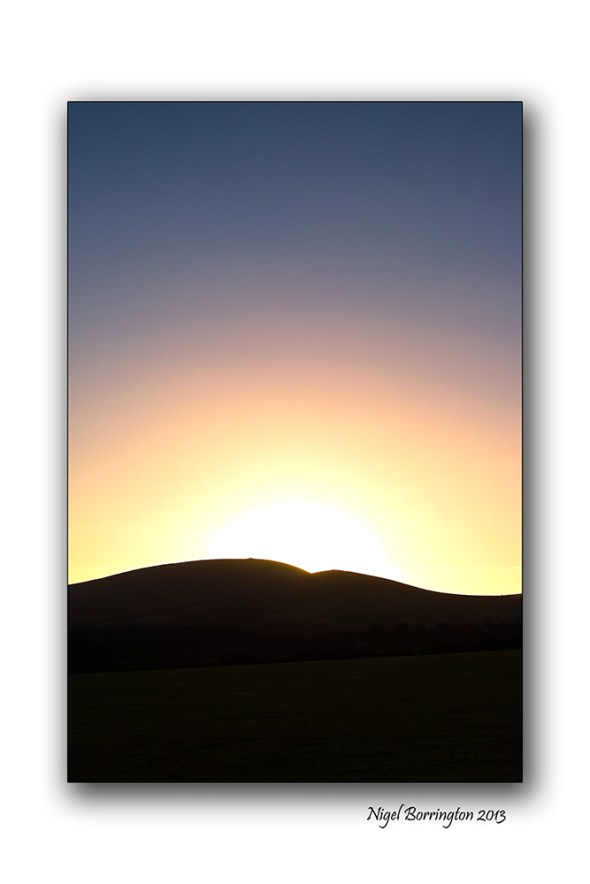
Sigma x3 slr camera, 18-50mm f3.5 – f4.5 lens
Slievenamon, county Tipperary
Irish Landscape Photography : Nigel Borrington
Sunrise from the Mountains, By : Anna Katherine Green (1846-1935)
Hung thick with jets of burning gold, the sky
Crowns with its glorious dome the sleeping earth,
Illuminating hill and vale. O’erhead,
The nebulous splendor of the milky way
Stretches afar; while, crowding up the heavens,
The planets worship ‘fore the thrones of God,
Casting their crowns of gold beneath His feet.
It is a scene refulgent! and the very stars
Tremble above, as though the voice divine
Reverberated through the dread expanse.
But soft! a change!
A timid creeping up of gray in east–
A loss of stars on the horizon’s verge–
Gray fades to pearl and spreads up zenithward,
The while a wind runs low from hill to hill,
As if to stir the birds awake, rouse up
The nodding trees, and draw off silence like
A garment from the drowsy earth. The heavens
Are full of points of light that go and come
And go, and leave a tender ashy sky.
The pearl has pushed its way to north and south,
Save where a line spun ‘tween two peaks at east,
Gleams like a cobweb silvered by the sun.
It grows–a gilded cable binding hill
To hill! it widens to a dazzling belt
Half circling earth, then stretches up on high–
A golden cloth laid down ‘fore kingly feet.
Thus spreads the light upon the heavens above,
While earth hails each advancing step, and lifts
Clear into view her rich empurpled hills,
To keep at even beauty with the sky.
The neutral tints are deeply saffroned now;
In streaks, auroral beams of colored light
Shoot up and play about the long straight clouds
And flood the earth in seas of crimson. Ah,
A thrill of light in serpentine, quick waves,
A stooping of the eager clouds, and lo,
Majestic, lordly, blinding bright, the sun
Spans the horizon with its rim of fire!
Kilkenny photography

Autumn view through the trees, county Kilkenny
Irish Landscape Photography : Nigel Borrington
Autumn through Kilkenny’s trees
Autumn is in full flight here in Kilkenny, I took these images yesterday while on a walk through one of our local woods.
The Gold of the Beach trees is just Wonderful.
Gallery
Sunday evening at the gate …. Poem by : John Montague

Images of the Galtee Mountains
Irish Landscape photography : Nigel Borrington
Sunday evening and it’s time for one final walk of the weekend.
I love to find a long lane to walk down then stop for a while, rest against a gate and just take in some views of the Irish country side.
These images are of the Galtee Mountains in counties Limerick and South Tipperary, just before the sun set.
I have included a poem below.
WINDHARP
By John Montague
The sounds of Ireland,
that restless whispering
you never get away
from, seeping out of
low bushes and grass,
heatherbells and fern,
wrinkling bog pools,
scraping tree branches,
light hunting cloud,
sound hounding sight,
a hand ceaselessly
combing and stroking
the landscape, till
the valley gleams
like the pile upon
a mountain pony’s coat..
The Lighthouse – by Henry Wadsworth Longfellow (1807-1882)

Sigma Sd15, 15-30mm lens
Dungarvan Lighthouse, County Waterford
Irish Landscape photography : Nigel Borrington
The Lighthouse
By, Henry Wadsworth Longfellow (1807-1882)
The rocky ledge runs far into the sea,
And on its outer point, some miles away,
The Lighthouse lifts its massive masonry,
A pillar of fire by night, of cloud by day.
Even at this distance I can see the tides,
Upheaving, break unheard along its base,
A speechless wrath, that rises and subsides
In the white lip and tremor of the face.
And as the evening darkens, lo! how bright,
Through the deep purple of the twilight air,
Beams forth the sudden radiance of its light
With strange, unearthly splendor in the glare!
Not one alone; from each projecting cape
And perilous reef along the ocean’s verge,
Starts into life a dim, gigantic shape,
Holding its lantern o’er the restless surge.
Like the great giant Christopher it stands
Upon the brink of the tempestuous wave,
Wading far out among the rocks and sands,
The night-o’ertaken mariner to save.
And the great ships sail outward and return,
Bending and bowing o’er the billowy swells,
And ever joyful, as they see it burn,
They wave their silent welcomes and farewells.
They come forth from the darkness, and their sails
Gleam for a moment only in the blaze,
And eager faces, as the light unveils,
Gaze at the tower, and vanish while they gaze.
James Hoban – Spirit of place

Nikon D7000 and Sigma SD15
Spirit of place, James Hoban Memorial, Callan county Kilkenny
Irish Landscape Photography : Nigel Borrington
James Hoban was from the Desart estate, near Callan county Kilkenny and is the architect of the White House (late-1793 or early-1794).
In 2008, 24 architecture students from the a University in Washington DC completed the memorial “Spirit of place” in his honour. I took the photographs posted here in 2011, one very clear night and then the last image on a evening last spring.
From : http://en.wikipedia.org/wiki/James_Hoban
“James Hoban was raised on an estate belonging to the Earl of Desart in Cuffesgrange, near Callan in County Kilkenny. He worked there as a wheelwright and carpenter until his early twenties, when he was given an ‘advanced student’ place in the Dublin Society’s Drawing School on Lower Grafton Street.
He excelled in his studies and received the prestigious Duke of Leinster’s medal for drawings of “Brackets, Stairs, and Roofs.” from the Dublin Society in 1780. Later Hoban found a position as an apprentice to the headmaster of the Dublin Society School the Cork-born architect Thomas Ivory from 1779? to 1785 .
Following the American Revolutionary War, Hoban immigrated to the United States, and established himself as an architect in Philadelphia in 1785.[1]
Charleston County Courthouse, Charleston, SC (1790-92), James Hoban, architect.
Hoban’s amended elevation of the White House (late-1793 or early-1794).
Hoban was in South Carolina by April 1787, where he designed numerous buildings including the Charleston County Courthouse (1790–92), built on the ruins of the former South Carolina Statehouse (1753, burned 1788). President Washington admired Hoban’s work on his Southern Tour, may have met with him in Charleston in May 1791, and summoned the architect to Philadelphia, Pennsylvania (the temporary national capital) in June 1792.
In July 1792, Hoban was named winner of the design competition for the White House.[4] His initial design seems to have had a 3-story facade, 9 bays across (like the Charleston courthouse). Under Washington’s influence, Hoban amended this to a 2-story facade, 11 bays across, and, at Washington’s insistence, the whole presidential mansion was faced with stone. It is unclear whether any of Hoban’s surviving drawings are actually from the competition.
Hoban was also one of the supervising architects who served on the Capitol, carrying out the design of Dr. William Thornton.
Hoban lived the rest of his life in Washington, D.C., where he worked on other public buildings and government projects, including roads and bridges. He also designed Rossenarra House near the village of Kilmoganny in Kilkenny, Ireland in 1824.
Hoban’s wife Susanna Sewall was the daughter of the prominent Georgetown “City Tavern” proprietor.
Hoban was also involved in the development of Catholic institutions in the city, including Georgetown University (where his son was a member of the Jesuit community), St. Patrick’s Parish, and the Visitation Convent founded by another Kilkenny native, Teresa Lalor of Ballyragget.
Hoban died in Washington, D.C. on December 8, 1831. He is buried at historic Mount Olivet Cemetery in Washington, D.C.”
A Spirit of place
Kilree Round Tower, County KIlkenny
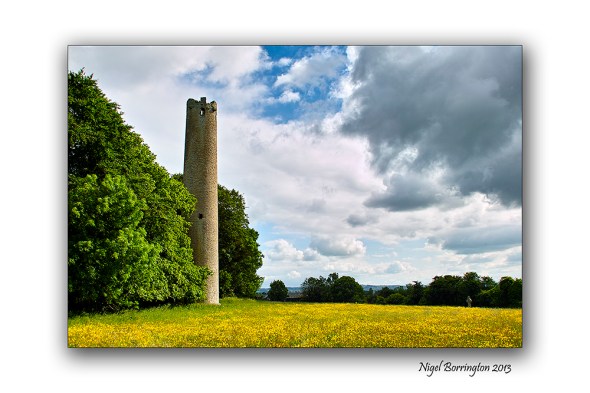
All image using a sigma SD15. 15-30mm lens
The Secret of Kells, Kilree Round Tower, County KIlkenny
Landscape Photography : Nigel Borrington
The secrets of the Kells is at Kilree
Kells, county kilkenny is full of heritage from past and while most people are drawn immediately to Kells Priory, one of the largest and best preserved walled monastic sites in Europe, there is another just as important with a history stretching back longer than the Cistercian brotherhood of the priory.
At Kilree, there is a trio of treasures – A round tower, an ancient church and a high cross where a king may or may not be buried. And adding to the mystique is a fourth, natural phenomenon, a Ballaun stone going back to pre-historic times that was used by the first inhabitants of this island. to drink from an for pagan idolatry.
Historians and archaeologists may have got it wrong about Kilree on a number of levels. When you first view if coming from Kells village it reminds you of Freestone Hill – An ancient place used before Christianity. It has commanding views of the surrounding countryside and seems to be the highest spot in the area and therefore a natural stronghold. Looking from it, you take in Knockdrinnagh Wood, Ballygowan, Hugginstown and the high lands beyond it and around to the Slieveardagh Hills. It also boasts commanding views of Sliabh an mBan and the Comeraghs in the distance.
So it begs the question was the round tower of Kilree used as a look out with its bells when danger was imminent. Was it used by the monks who were for all intents and purposes living in a hollow by the King’s River and therefore had no idea of who or what was approaching them. It’s probably too simplistic a view but we are sure of one thing – the tower was built around the 11th century and would have been used as a defence against the maurauding Vikings who had a stronghold in Waterford.
It is said but not proven that the bones of a great king are buried under the high Cross at Kilree, just 40 yards from the round tower and the church of St Brigid that lies in ruins yet still has a strong association with the people of the area in both Kells and Stoneyford. Although it stands 90 feet high, Kilree Round tower is not easy to see because it is set amid a grove of trees. A fine slim building with a diameter inside of just 9 feet it must have been tight in there. With six different levels and a battlement area at the top as well as a belfry, it is little wonder that rope ladders were used here.
Like the other round towers in the county, its entrance faces the church and there is a long association between the two.
The round tower and church are enclosed in a grove of beautiful trees which seem to detract slightly from the height of the tower but once you enter this wonderful place you can feel the past coming at you. It’s sad that a sign in bold yellow at the entrance tells you to beware of the bull. What a lovely first impression for visitors. The land is extremely fertile and there is a rich covering of spring grass on the field and you can appreciate why a farmer would be so anxious to keep it so but the sign should be taken down when the bull is not there.
It is important to appreciate the work done by researchers over the years on Kilree and the rest of the county none more so that Canon Carrigan in his History of the Diocese of Ossory; the wonderful parish history of Dunnamaggin by Richard Lahart which provides us with so much detail but it is the findings of Ireland’s great antiquarian scholar from Slieverue in South Kilkenny, that is most revealing. The research by John O’Donovan on place names and on sites like Kilree for the Ordance Survey is invaluable in deepening our knowledge of our past.
Up to the middle of the 19th century it was claimed that King Niall Caille was buried here in 844AD and that his bones lay under the high Cross which is uninscribed. It seems now that the high cross was erected significantly before this date and we learn from different researchers that these kind of crosses were commemorative and not built to cover the dead. He upset a lot of people when he said the real ancient Irish name for the site was not actually Kilree which up to them was meant to be the church of the king but Cill Freach after a female saint, Freach. Canon Corrigan also studied this and felt that Kilree was a corruption of the name Cill Ruiddchi, the church of St Ruiddchi. While it is hard to go past the original name of Cill Bride as the name for the church, named after St Brigid, we do know from local people and from Richard Lahart that the well at Kilree was also named in honour of St Brigid and that goes back over 1,000 years. It is hard to see past Cill An Ri and of course it is still known locally by people as The Steeple, a reference to the bell tower on top of the round tower.
Inside the church,tombs of local people remain. The poorer people would have bee buried furthest away from the church. From Norman times the Howlings, Holdens or Howels are associated with the site and for some reason these are the same people as the Walsh’s of the Mountain (I don’t understand that). From medieval times, the Comerfords were closely associated with Kilree along with the Izod family, Flemings, Ryans, St Legers and of course in recent times, the Goreys.
Again the lack of signposts for such an amazing place is sad. The only sign coming from Kilkenny city is at Kells Priory and those in charge of the site, have done a good job in keeping it quiet.
But what stands out most about Kilree is that it is still used as a graveyard and the ancient burial ground is well looked after by the people iving in the area..
Kilree is also home to a Ballaun Stone located 250 yards north of the round tower in the corner of a field of heavily weathered limestone and is marked on the Ordance survey map for the area. A bullaun is the term used for the depression in a stone which is often water filled.
Local folklore often attaches religious or magical significance to bullaun stones, such as the belief that the rainwater collecting in a stone’s hollow has healing properties. Ritual use of some bullaun stones continued well into the Christian period and many are found in association with early churches like Kilree or should that be St Brigids or St Freach’s or St Ruiddchi’s/ take your pick.
Published in the kilkenny people. 2012
Image Gallery
County Kilkenny – through it’s trees

All images using a – Sigma SD15, 15-30mm lens
County kilkenny, through its trees
Landscape photography : Nigel Borrington
A sense of county Kilkenny , September 2013
Getting out and about in county Kilkenny on these late summer days is just wonderful, this Gallery of images was from an evenings walk through some local country lanes. I hope they get across a sense of the county and its wonderful landscape on an early evening in September.
Sunday on the river bank

All images using a Sigma SD15
Images of the river Nore, County Kilkenny
Irish landscape photography : Nigel Borrington
Sundays at this time of year can be a great time to go for a river walk, its getting towards autumn but the walk along the river Nore towards St Mullins can still be green and full of life.
There were still lots of people around, including one family rowing in their Canadian Canoes, I got some images of them and we met them again later on outside a Cafe and shared a drink or two.
The River Nore in September – Gallery
Its the weekend so….

Waterford coastline, above boats strand.
Landscape photography : Nigel Borrington
Its the weekend so why not find a coastline to visit, take a walk along the cliff tops and watch the tide come in on the beach below ……
Have a great weekend …
Stone circle in the comeragh mountains

All images using a Sigma SD15, 15-30mm lens, iso 50
Comeragh mountains – stone circle
Irish landscape photography : Nigel Borrington
Stone circles
For myself I love being out on a summer evening walking in the hills, a lot of the Irish hill sides are defined as common land and even though farmed by the same families for many generations these areas are by law open land.
The Comeragh mountains in county waterford has many locations well worth finding but for myself the most interesting are the neolithic monuments and grave sites.
While out last evening I came across this stone circle resting in one of the many valleys in this area, it once would have been a monumental site with its some eight foot high standing stones used to mark the passing of the farming year.
Ireland has a wealth of prehistoric sites that few since the Christian period pay any attention to, for myself however this is where the true history of Ireland exists, People existed in small communities at a local level, however they had everything in common with and communicated with people throughout Europe.
They existed in nature, out in the wilds and they understood the world around them with their very survival in mind, they held personal skill that they learnt from each other.
This stone circle marks those skill’s very well as measuring the seasons was vital to them.
NB: I have circled the above map to locate the stone circle and give some idea as to its size.
Comeragh mountains stone circle – Gallery
Comeragh Mountains – Wild cotton grass fields

All images using a Sigma SD15, 15-30mm lens, iso 50
Comeragh Mountains, co.Waterford – Wild cotton grass fields
Landscape Photography : Nigel Borrington
Wild Cotton grass, Comeragh mountains, county Waterford
Last evening we went for a long walk with our dog through the comeragh mountains and came across an area of Bog cotton, it covered the entire hill side and valley in front of us as we walked through it.
So I just wanted to share this wonderful view and I hope get across just how amazing a view this offers on the hill sides of these mountains in the middle of a very warm July.
Common Grass Cotton
As its other common name, Bog Cotton, might suggest, this is a plant of very damp peaty ground. Its leaves mostly arise from the base of the plant, often being tinged with red or brown. It has tiny insignificant little brown flowers in April and May but it is really when it is in fruit that this becomes a most eye-catching and attractive plant. Borne on 30-50cm high, cylindrical stems, the little seeds are held in fluffy, downy, white tufts which quiver and shake in the wind, a most effective dispersal method. This is a native pant belonging to the family Cyperaceae.
Wild Cotton grass – Gallery
Its the weekend so……

Sigma SD15, 15-30mm lens, iso 50
Fishing Boats on the River Suir, County Waterford
Landscape Photography : Nigel Borrington
Its the weekend so why not find a river bank to sit on and let time pass you by …….
Lismore Castle

Sigma SD15, 15-30mm f3.5-4.5 lens, Iso 50
Lismore Castle, country Waterford
Irish Landscape photography : Nigel Borrington
Lismore Castle, county Waterford
The town of lismore sits on the banks of the Blackwater river, as it flows through county waterford. The town is small with a population of about 1500 people.
I have visited the town many times, a farmers and craft market is held each Sunday morning just outside the gates of the Castle, there is also one of Ireland’s best rural arts galleries here.
The town is the location of Lismore castle and it’s one of Ireland’s longest standing building, of it’s kind.
Its described as follows below:
Lismore castle : Early history
The castle site was originally occupied by Lismore Abbey, an important monastery and seat of learning established in the early 7th century. It was still an ecclesiastical centre when Henry II, King of England stayed here in 1171, and except for a brief period after 1185 when his son King John of England built a ‘castellum’ here, it served as the episcopal residence of the local bishop. In 1589, Lismore was leased and later acquired by Sir Walter Raleigh. Raleigh sold the property during his imprisonment for High Treason in 1602 to another infamous colonial adventurer, Richard Boyle, later 1st Earl of Cork.
Boyle came to Ireland from England in 1588 with only twenty-seven pounds in capital and proceeded to amass an extraordinary fortune. After purchasing Lismore he made it his principal seat and transformed it into a magnificent residence with impressive gabled ranges each side of the courtyard. He also built a castellated outer wall and a gatehouse known as the Riding Gate. The principal apartments were decorated with fretwork plaster ceilings, tapestry hangings, embroidered silks and velvet. It was here in 1627 that Robert Boyle The Father of Modern Chemistry, the fourteenth of the Earl’s fifteen children, was born. The castle descended to another Richard Boyle, 4th Earl of Cork & 3rd Earl of Burlington, who was a noted influence on Georgian architecture (and known in architectural histories as the Earl of Burlington).
Lismore featured in the Cromwellian wars when, in 1645, a force of Catholic confederacy commanded by Lord Castlehaven sacked the town and Castle. Some restoration was carried out by Richard Boyle, 2nd Earl of Cork (1612-1698) to make it habitable again but neither he nor his successors lived at Lismore.
The Dukes of Devonshire
The castle (along with other Boyle properties – Chiswick House, Burlington House, Bolton Abbey and Londesborough Hall) was acquired by the Cavendish family in 1753.
The daughter and heiress of the 4th Earl of Cork, Lady Charlotte Boyle (1731-1754) married William Cavendish, 4th Duke of Devonshire, a future Prime Minister of Great Britain & Ireland.
Their son, the 5th Duke (1748-1811) carried out improvements at Lismore, notably the bridge across the river Blackwater in 1775 designed by Cork-born architect Thomas Ivory.
.
Castle Gardens
The castle’s gardens are open to the public and feature contemporary sculptures, including works by Anthony Gormley, Marzia Colonna and Eilís O’Connell. The upper garden is a 17th-century walled garden while much of the informal lower garden was designed in the 19th century.
You can visit the Gardens of the Castle during the summer months for a fee of €8 and they are wonderful.
Gallery of Lismore
For the best views of the castle itself you need to cross the river and enter the fields below the castle on the other side of the bridge crossing the Blackwater river.
I spent a couple of hours in these fields just walking along the river and taking some photo’s of the castle above me, its just a wonderful spot to sit down and watch the fish jumping and the Herons hunting for fish in the river.
The Images Below are just some that I took, I hope they have captures a sense of this place…..
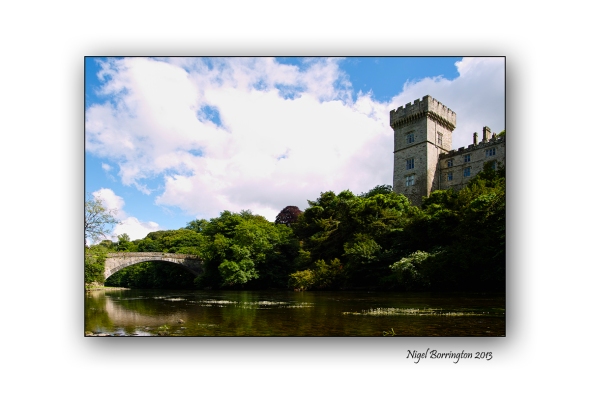
Sigma SD15, 15-30mm f3.5-4.5 lens, Iso 50
Lismore Castle, country Waterford
Irish Landscape photography : Nigel Borrington
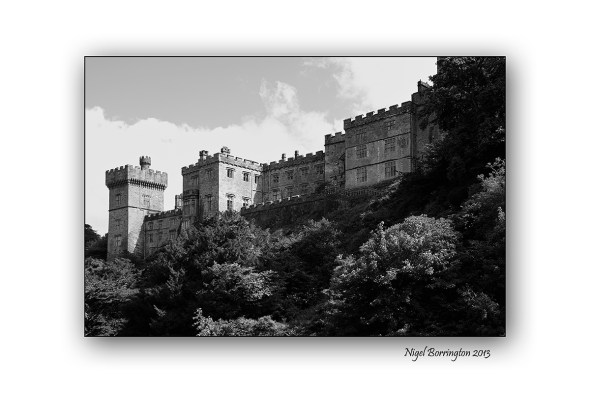
Sigma SD15, 15-30mm f3.5-4.5 lens, Iso 50
Lismore Castle, country Waterford
Irish Landscape photography : Nigel Borrington

Sigma SD15, 15-30mm f3.5-4.5 lens, Iso 50
Lismore Castle, country Waterford
Irish Landscape photography : Nigel Borrington

Sigma SD15, 15-30mm f3.5-4.5 lens, Iso 50
Lismore Castle, country Waterford
Irish Landscape photography : Nigel Borrington

Sigma SD15, 15-30mm f3.5-4.5 lens, Iso 50
Blackwater river/Lismore Castle, country Waterford
Irish Landscape photography : Nigel Borrington
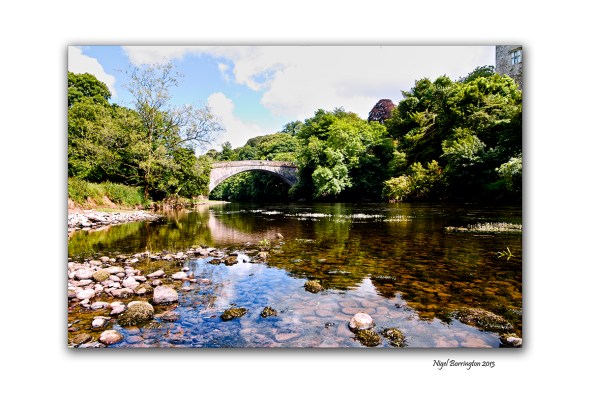
Sigma SD15, 15-30mm f3.5-4.5 lens, Iso 50
Blackwater river/Lismore Castle, country Waterford
Irish Landscape photography : Nigel Borrington
Kilcooley Abbey

All images using a Sigma SD15, 15-30mm lens, iso 50
A sense of place, Kilcooley Abbey, county Tipperary
Irish Landscape Photography : Nigel Borrington
Kilcooley Abbey, County Tipperary
Kilcooley Abbey is a Cistercian Abbey close to the Village of Gortnahoe,in Co Tipperary, located within the grounds of the Kilcooley Estate. This abbey dates from 1182 when Donal Mor O’ Brien granted lands to the Cistercians, to build an abbey here. The abbey which is a sister house to both Jerpoint Abbey and Holy Cross Abbey, is considered to be a hidden gem,tucked away in this remote corner of Co. Tipperary. The Abbey is found inside a walled estate.
The main part of the abbey consists of the Entrance Chamber, the Church, the Tower and the Sacristy. The Entrance Chamber has a well carved baptismal font on its south wall. The nave of the church is still roofed but the rest of it is out in the open. The church has two large carved windows on its east and west side. The chancel contains two stone tombs and a stone altar. One of these tombs is that of the knight Piers Fitz Oge Butler. His tomb records his death as taking place in 1526 and has some beautiful carvings of 10 apostles on the side of it carved by Rory O Tunney who is also noted for his work in Jerpoint Abbey. On top of Butler tomb there is the effigy of a knight with a dog curled up at his feet. The knight though hasn’t fared well through the years and most of his face has been chipped off. The Sacristy is entered through a magnificent carved archway which has many carvings such as a scene depicting the crucifixion and more bizarrely a mermaid holding a mirror which was meant to depict vanity. Roger Stalley suspects this screen wall may represent the entrance to a private Butler chapel, as two Butler shields are depicted. The east end of the nave is notable, because seats for the officiating clergy have been carved into the crossing piers. The work here is very fine, but does not have the sculptural finesse of nearby Holycross Abbey.
Outside the abbey there is also a beehive shaped ruin. It isn’t known whether this was used as a Columbarium to store ashes or a dove-cote for pigeons. But most probably it was a dove-cote since there is a 3-foot (0.91 m) wide hole in the ceiling from which they would have entered and left. Also outside the abbey is the Infirmary which is still in a fairly good condition although access to the roof of it is blocked.
The Cloisters of the abbey are long gone with only one column still remaining. The path of the cloisters though still remains with a pebbled walkway around the grass square. The centre even has a large tree growing in it. Beside the Cloisters the Parlour and Chapter House are still there. Also the Calefactory (Warming room) still remains but without a roof. And on the south side of the Cloisters the Monks Dining Hall still stands. The dining hall although it has no roof still has a spiral staircase but this sadly has been barred up because of an ever increasing Irish-to-American(sue-happy)society. You’ll also find all the second floor rooms such as the Monks Dorms and the Main Tower locked up by a certain Office of Public Works and for some reason the Parlour, Chapter House and Calefactory are also barred. But don’t let this deter you from visiting one of the most comprehensive abbeys in Ireland.
Kilcooly Abbey was also used in the making of the film by John Boorman “Excalibur” based on the tale of King Arthur and the knights of the round table. There is an interesting pyramid structure on the grounds of the abbey.
Gallery images
Irish Burnet Rose, Rosa spinosissima (Briúlán)

Sigma SD15, 15mm-30mm lens, iso 50
Irish Burnet Rose, Rosa spinosissima (Briúlán)
Irish Nature photography by : Nigel Borrington
Rosa spinosissima (Briúlán)
A walk along a woodland path or river bank at this time of year will give you a wonderful view of Ireland wild flowers, yesterday I photographed these wild roses.
“This little rose is such a delight to find, usually on sandy soil, limestone pavements and grassy heaths. It’s an erect, bushy shrub, about 50cm in height with numerous straight thorns and stiff bristles. Its pretty 3-5cm flowers can be white, cream or pink and are comprised of five heart-shaped petals. They flower from May to August after which the bush displays its fruit in spherical, purplish-black hips which still have the remnants of the sepals at their tops. The leaves are 3-5 pairs of small rounded leaflets. This shrub usually sheds its leaves in winter. It is a native plant belonging to the family Rosaceae. There are some microspecies. ”
Ref : Wildflowers of Ireland

Sigma SD15, 15mm-30mm lens, iso 50
Irish Burnet Rose, Rosa spinosissima (Briúlán)
Irish Nature photography by : Nigel Borrington

Sigma SD15, 15mm-30mm lens, iso 50
Irish Burnet Rose, Rosa spinosissima (Briúlán)
Irish Nature photography by : Nigel Borrington
Images from the river bank – river Suir county Tipperary

Sigma sd15, 15-30mm f3.5-4.5 lens, iso 50, tripod mounted.
Images from the banks of the river suir, clonmel, County Tipperary
Landscape photogrpahy by , Nigel Borrington
The River Suir that runs through county Tipperary and Waterford before reaching the sea at the ring of hook and the hook head light house is one of Ireland most Beautiful rivers in the country, many people have painted, photographed and written book on this river.
These images are from a walk I took last evening with Molly our Golden retriever.
I found this poem from a local woman, living in Carrick-on-suir
A Personal Poem by Maura Murphy
Published on Friday, November 21st, 2008 at 12:09 pm
Maura Murphy, Collins Park, Carrick-on-Suir while a patient at Waterford Regional Hospital recently, penned the following poem about her adopted home- town and the river Suir that flows through it.
River of Memories Reflector of Light / Timeless, Endless, Hidden Might / I Recall Happy Walks, Children in Tow / Watching the Fishermen, Swans in a Row / Throw Sticks in the Water, Who’ll Win the Race / In Summer the Swimmers Showing their Pace / You are the Town, You Gave it it’s Name / All Gained from your Bounteous Supply of Free Game / The Trout and the Salmon Kept Starvation at Bay / Put Food on the Table for Many each Day / As You go on Your Journey, From Source to the Sea / I Thank You for the Joy You Have Brought to Me / For the Picnics, the Laughter, the Fun and the Games / In my Happy Memory They ever Remain.
The river Suir Wiki

Sigma sd15, 15-30mm f3.5-4.5 lens, iso 50, tripod mounted.
Images from the banks of the river suir, clonmel, County Tipperary
Landscape photogrpahy by , Nigel Borrington

Sigma sd15, 15-30mm f3.5-4.5 lens, iso 50, tripod mounted.
Images from the banks of the river suir, clonmel, County Tipperary
Landscape photogrpahy by , Nigel Borrington
Templemichael church, Ballynatray estate, Cork.

All images : Sigma SD15, 15-30mm f3.5-4.5 lens,iso 50
Templemichael church and grave yard, County Cork
Landscape Photography : Nigel Borrington
TempleMichael church, County Cork
If you walk around the Irish landscape, one feature that cannot be avoided and that you will come across very quickly is the countries abandoned church yards, I find these places just amazing to walk around. The grave yard here must contain at least 200 graves, all surrounding the church which is itself in ruins and just a shell.
I have no intention of dealing with the history and as to why these places are forgotten, but I think that anyone would feel a little uneasy walking around these yards. Generations of French/British/Irish – European people rest here, families going back some two or three hundred years.
No one left to lay flowers, No one to cut the grass. Most of the head stones are slowly falling over and the names disappearing. my only personal interest in these church’s is based around the fact that when I walk around them I see no one visiting, no one sitting next to the grave’s of their ancestors, any descendants are absent from these place’s.
History of TempleMichael church
In 1183 Raymond le Gros established a Preceptory of Knights Templar at Rhincrew, an out post of which was TempleMichael. The keep was built specifically to control the river crossing.
The now ruined Church of Ireland parish church dates from 1823 it was built with a grant from the Board of the First Fruits, and until about twenty years ago was used for worship.
Gallery of TempleMichael church and grave’s



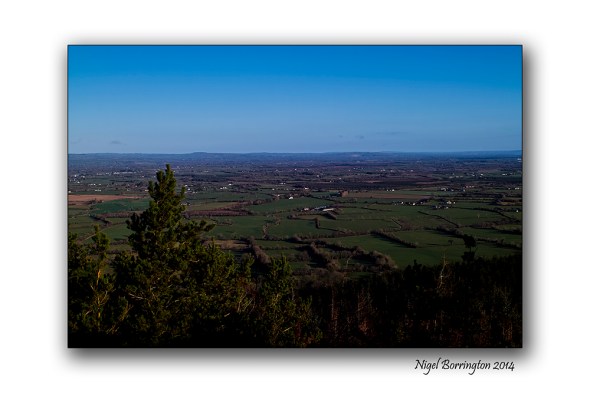

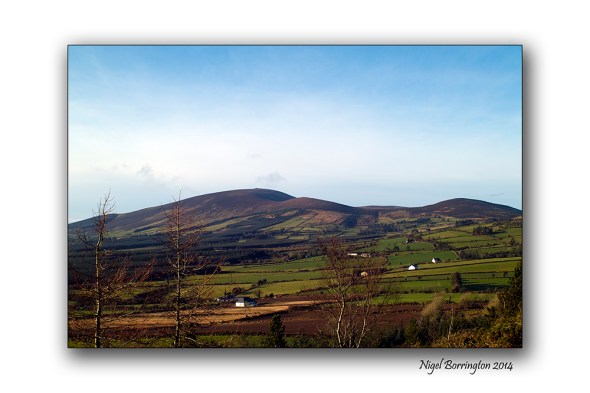
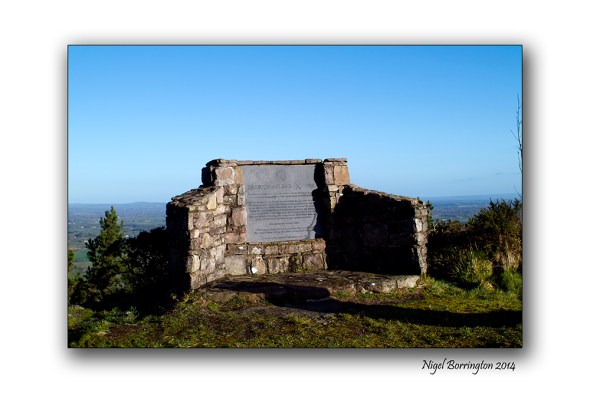

































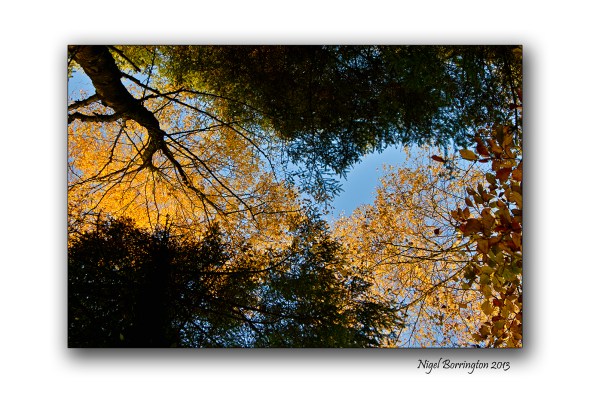

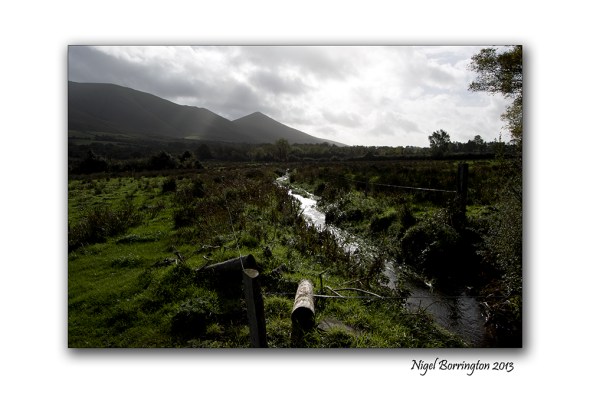


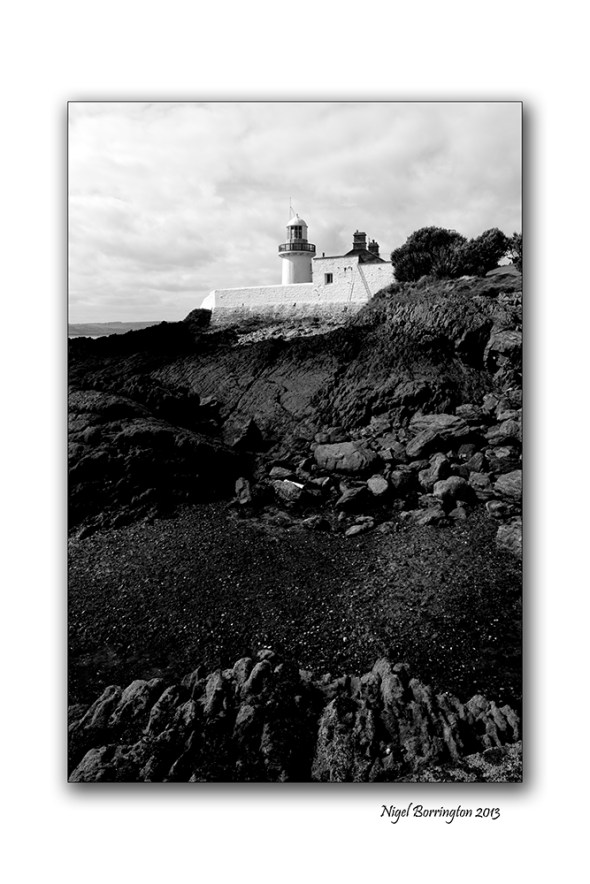

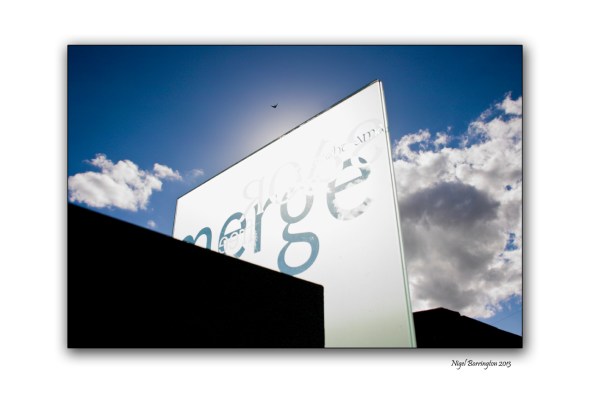





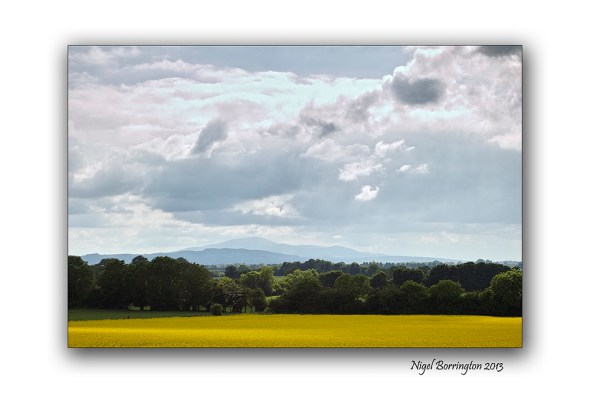





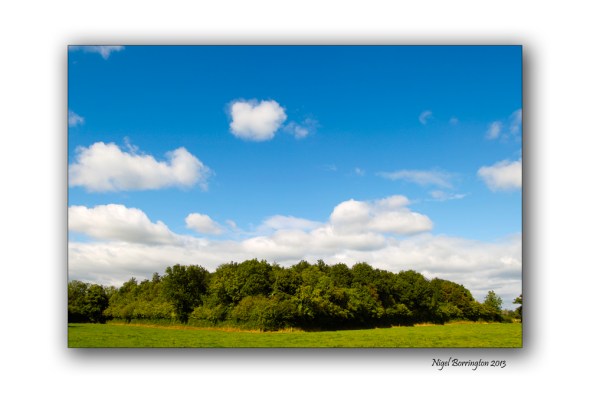



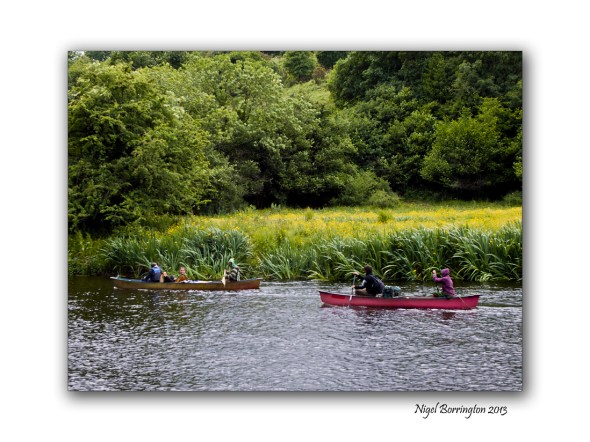





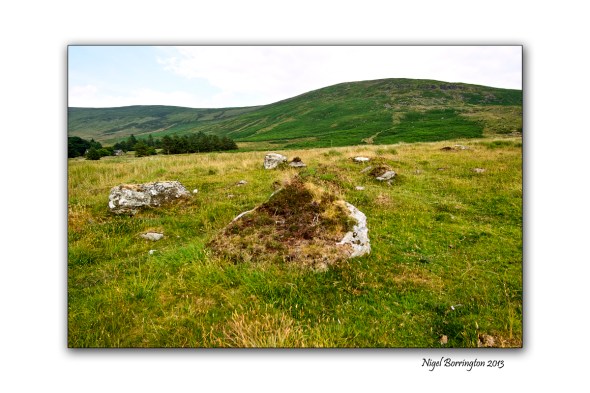


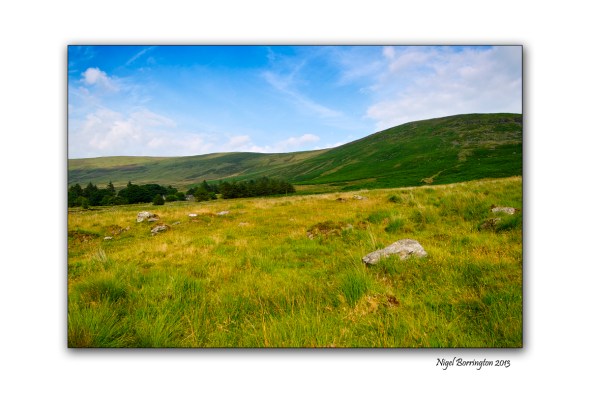





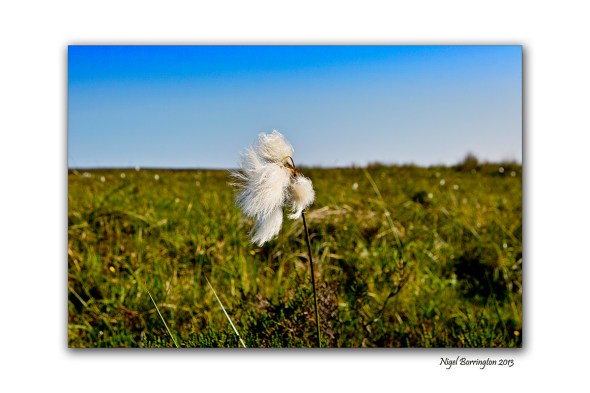



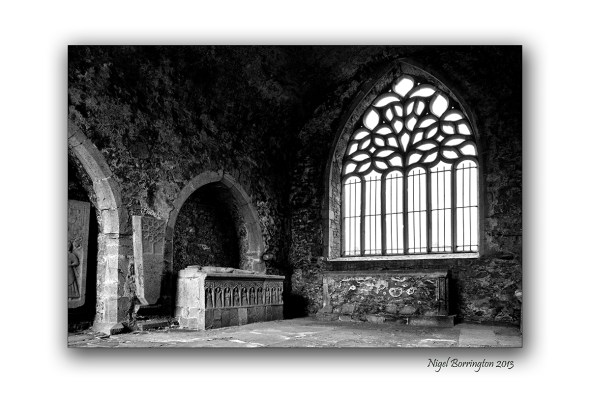










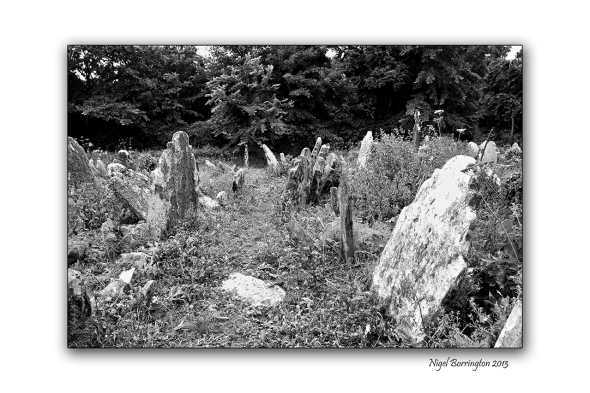
Two Cows in county Kilkenny
Sigma SD x3 Slr, 15-30mm f3.5-4.5 ex lens
Two cows in County Kilkenny
Irish Landscape potography : Nigel Borrington
It’s not often, if at all I post a single image, just one image !
So maybe its time to just look at one, a single image of two cows in a field.
I was just standing at a gate that’s along a lane I often walk down in county Kilkenny and took this photo, so I hope you enjoy it !
Share this:
October 25, 2013 | Categories: Comment, Down on the farm, Landscape, Nature and Wildlife, Solo images | Tags: cows, farming images, irish farms, Irish photography, Kilkenny, Kilkenny landscape photography, Landscape, Nigel Borrington, sigma sd15 | 15 Comments